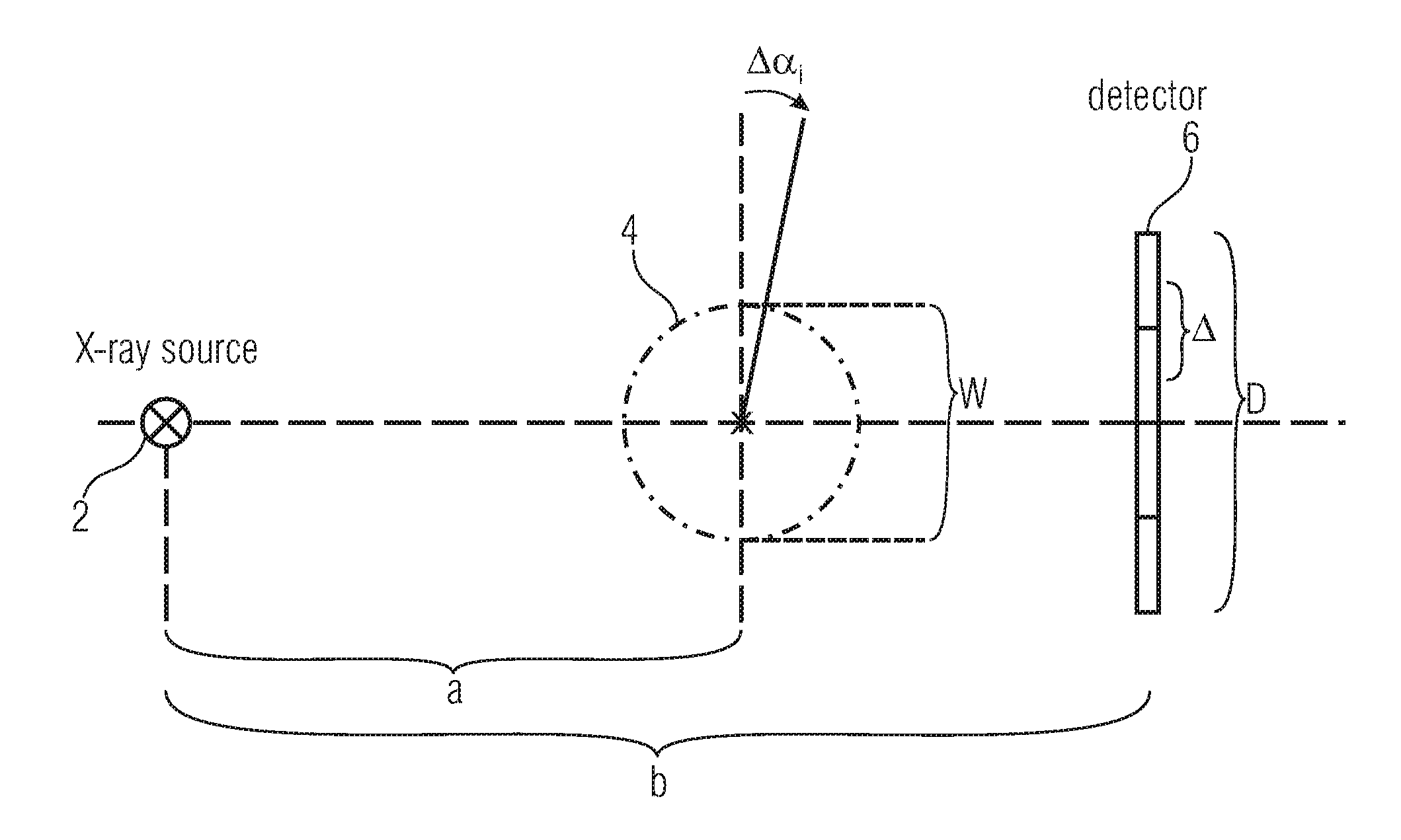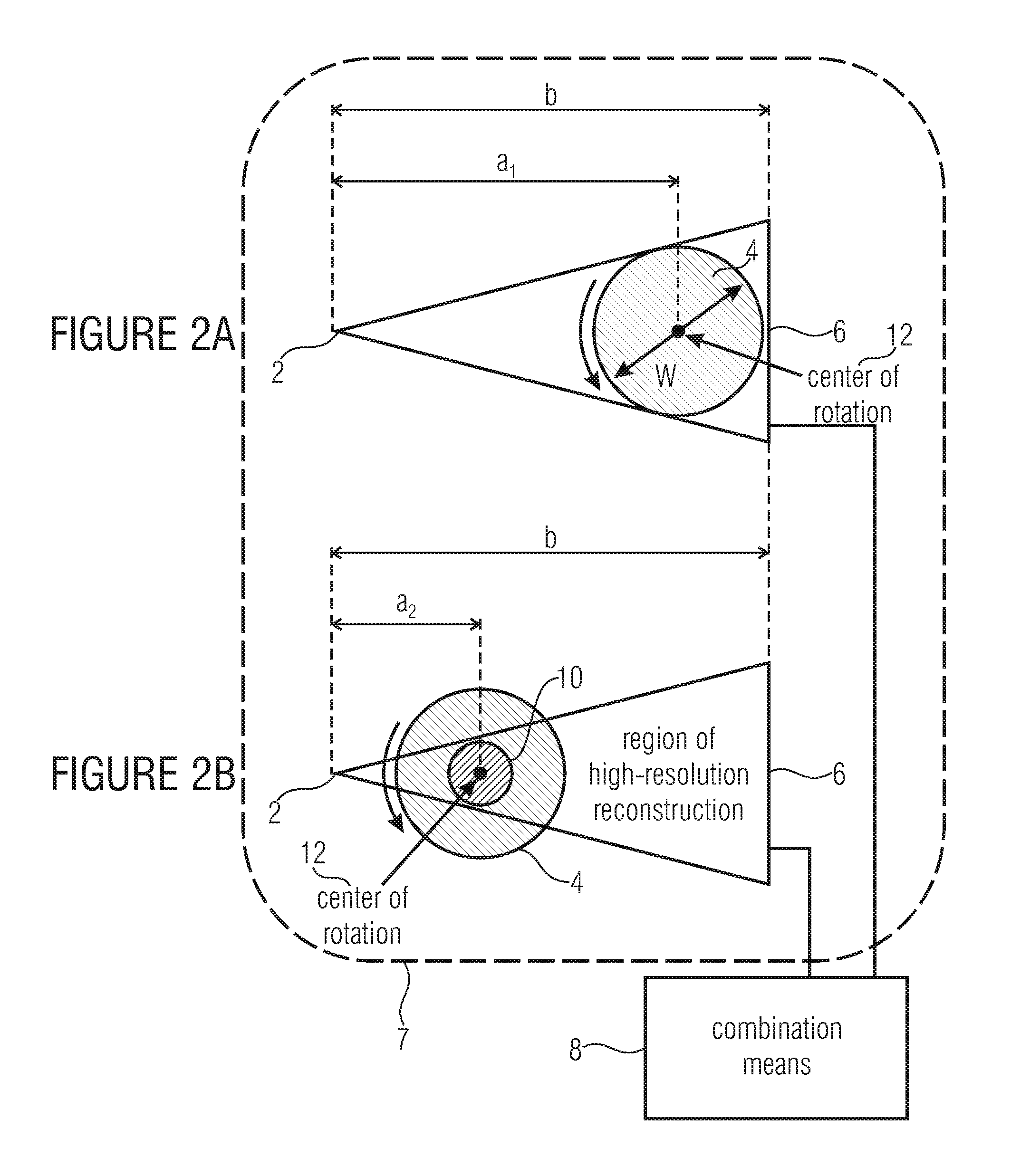Device and method for producing a ct reconstruction of an object comprising a high-resolution object region of interest
a high-resolution, object technology, applied in image data processing, diagnostics, applications, etc., can solve the problems of more useful information, limited resolution, and affecting the diagnostic conclusion that can be drawn from images
- Summary
- Abstract
- Description
- Claims
- Application Information
AI Technical Summary
Benefits of technology
Problems solved by technology
Method used
Image
Examples
Embodiment Construction
[0031]FIG. 1 schematically shows the fundamental elements and their relative arrangement of a CT measurement setup, which need to be understood as the basis for the following discussion of several embodiments of the invention. FIG. 1 shows an X-ray source 2, assumed (in an idealized manner) to be point-shaped, by means of which an object arranged within a measuring field 4 is imaged to a detector 6. Those factors which, with a point-shaped X-ray source 2, limit the spatial resolution achievable are the distance b of the X-ray source 2 from the detector 6, the distance a of the X-ray source 2 from the center (position of the axis of rotation) of the measuring field 4, the size of the object W (here assumed to be a diameter of the measuring field), and the distance Δ of two adjacent pixels or detector elements of the detector 6, whose entire geometric expansion within the dimension contemplated is to be D.
[0032]As was already described above, for the application of standard CT image r...
PUM
 Login to View More
Login to View More Abstract
Description
Claims
Application Information
 Login to View More
Login to View More - R&D
- Intellectual Property
- Life Sciences
- Materials
- Tech Scout
- Unparalleled Data Quality
- Higher Quality Content
- 60% Fewer Hallucinations
Browse by: Latest US Patents, China's latest patents, Technical Efficacy Thesaurus, Application Domain, Technology Topic, Popular Technical Reports.
© 2025 PatSnap. All rights reserved.Legal|Privacy policy|Modern Slavery Act Transparency Statement|Sitemap|About US| Contact US: help@patsnap.com



